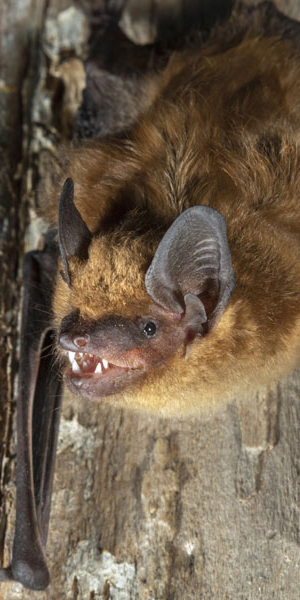| Big Brown Bat | ||
 |
Classification(s) : | Predator, Prey |
| Cat Name : | Bat | |
| Common Name : | Big Brown Bat | |
| Scientific Name : | Eptesicus fuscus | |
| Other Name(s) : | Brown Bat | |
| Physical Description : | Big brown bats are found in rural, suburban, and urban habitats and sometimes live in colonies. Dark brown fur covers this snub-nosed animal everywhere but its dark face and leathery black wings. |
|
| Physical Statistics : | Length: 3 – 5 Inches (8 – 13 Centimeters) Weight: .4 – 5 Ounces (11 – 23 grams) |
|
| Behavior : | Big brown bats roost during the day and fly at night to catch insects. When it’s wet or cold, they do not come out. Big brown bats hibernate in the winter. |
|
| Social Organization : | Male big brown bats live solitary lives while the females live in colonies of 20-75 adults. |
|
| Approval Level : | None; Big brown bats are somewhat common and have no implications about the environmental situations. | |
| Kill Difficulty : | Low; Big brown bats are rather small and lack significant weapons that could harm a cat. |
|
| Training Level : | Specialty - Bat; Big brown bats are somewhat difficult to hunt because they rarely leave the air and are only active in the night. |
|
| Hunting Tactic : | Bats | |
| Food Quality : | Low; Big brown bats are tiny creatures for which the expenditure of energy and the dangers of night hunting in addition to tasteless flesh lead to a low value as food. | |
| Danger Level : | (); | |
